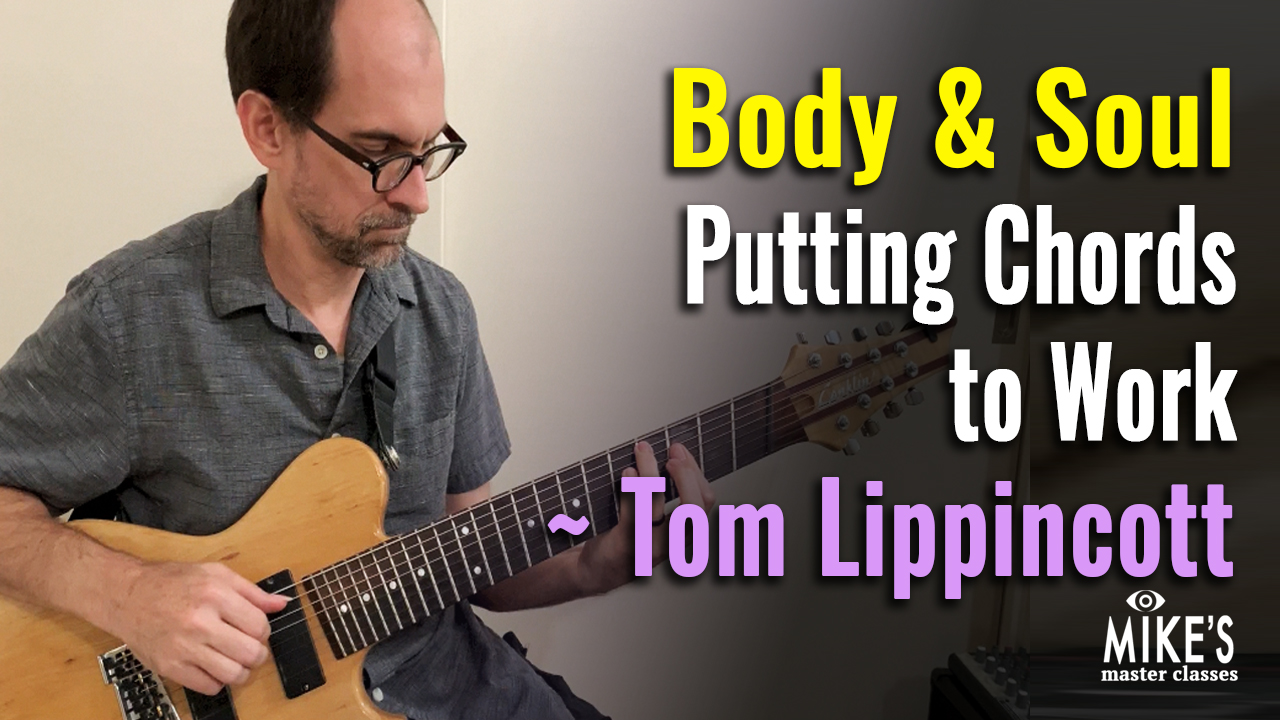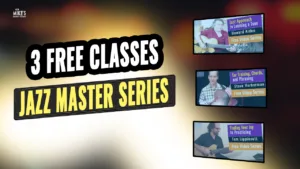You have learned many new chord voicings, inversions, and string sets and are starting to get some of them under your fingers. But in a performance situation, these new voicings are slow to come out naturally. This class shows how to apply chord voicings to a tune in a practical real-world situation with the goal of making them an organic part of your vocabulary.
In this class, we will explore different inversions of drop 2, drop 3, drop 2&3, and drop 2&4 voicings (with some close voicings as well) as applied to chord changes of the A section from the song Body and Soul. This is an intermediate to advanced class which assumes the viewer already has some familiarity with these voicing types, although a brief explanation is provided for anyone needing a refresher.
First, we will start with simple voicings that define the basic harmony and then move on to substitute chords that suggest upper extensions and/or different melodic minor modes for more harmonic color. The goal is not merely to have one or two new “grips” to plug in but rather to have a more fully-encompassed command of the new voicings all over the fingerboard so that they may be called upon at will as your musical creativity dictates. Finally, an example etude links the new voicings to a real musical setting with a melodic line and contrapuntal motion. This etude could be used as a rubato intro to Body and Soul.
Body and Soul: Putting Chords to Work covers:
- review of drop 2 voicings and the drop system
- basic chord changes for the A section of Body and Soul with harmonic analysis
- exercise for gaining fluency with drop 2 voicings as applied to Body and Soul
- explanation of the 24 possible ways to arrange the notes in any four-note chord with review of the basics of close, drop 2, drop 3, drop 2&3, and drop 2&4 voicings
- exercises for gaining fluency with drop 3 and drop 2&3 voicings as applied to Body and Soul
- chord substitution concepts to generate voicings with more harmonic color
- chord substitution table for Body and Soul
- exercise for gaining fluency with substitute chords as applied to Body and Soul
- chord etude with upper melodic line and contrapuntal movement as an example of real-world musical application of concepts from the class
- 50 minute running time
- includes 17 pages of written examples and exercises
- All musical examples from the video are provided in music notation, tablature, and chord grid form.
- Each example performance is shown in close-up view and titled and numbered for easy navigation.
- Backing tracks at two different speeds are included for practice.












More than information
This course contains a lot of very useful material. Maybe more importantly, it gives you ways to apply that material, and not just to Body and Soul. You get a very full palette of chord voicings and inversions and substitutions, but also exercises to really get them under your fingers as quickly and securely as possible. Probably the most useful course I’ve taken on MMC.
by John PopePutting what you learn to good use
I enjoyed this class very much. It addresses an important issue: what do you do with all the chords you’ve learned? Are you really using all the voicings, or are you just sticking to certain ones all the time (guilty). Are you aware of all the possible substitutions that you can use (really important, since rootless voicings keep the bass player happy). Do you play drop 3 chords starting from the 5th string? (some, not enough). Finally, do you ever use drop 2&4 or something besides drop 2 or drop 3? I will definitely use these ideas when learning tunes (and maybe even try something like comping the whole tune within the first 4 frets, then frets 5-8, etc. forcing me to not always go to the “typical” chords I use). Highly recommended.
by DAVID TARDIOPutting chords to work
Hello Tom, I really love the way you laid all this out. An immense amount of work I’m sure. What I really love is the concept of working on chord inversions while all the while being inside a really good song. The old idea of two birds with one stone. Also the included charts of associated chords for color are invaluable. Thank you very much for this course. Robert Gannon
by Robert Gannon